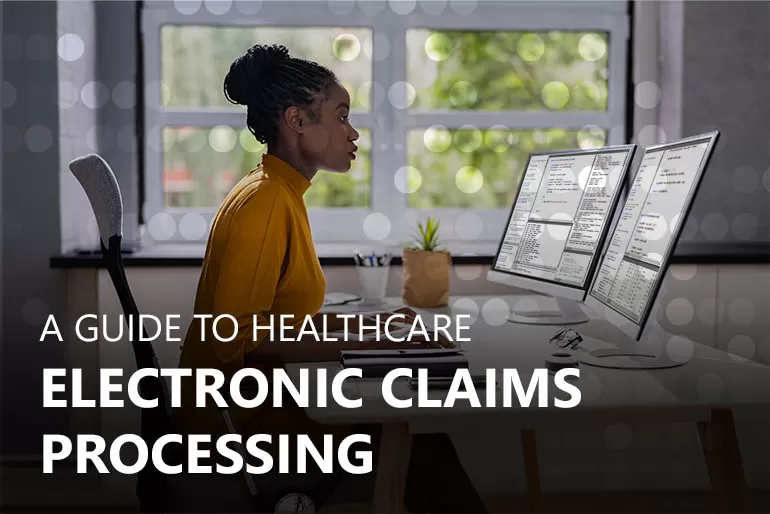One of the biggest frustrations for a practice or billing manager is to spend several hours processing medical claims, only to have several of them unexpectedly denied. The American Medical Association recently reported that between 1.38-5.07% of claims are denied by payers on first submission. While it seems like a small fraction, that could mean significant bottom-line loss in the long-run. For a growing practice, we’re talking hundreds if not thousands of denials each year leading to lost revenue and more staff time dedicated to appealing those claims. Specific services are often denied, or reimbursement is reduced, particularly if you're a multi-specialty practice who submits on multiple sites, payers, and patient tests. The trick is to make sure claims are clean the first time. The following are five things you can do today to reduce the frequency of medical claims processing mistakes.

What Does a Medical Claims Processor Do?
Medical claims processors typically work for an office gathering patient demographic and insurance information for submitting claims to payers. A medical claims processor’s main job is to make sure doctors are being compensated for the procedures they’re doing, and that the payer is paying out the doctor properly. They are often employed by a doctor or network of healthcare providers and can also be on the insurance side. To be an effective medical claims processor, it helps to be knowledgeable in diagnosis codes, CPT codes, and compliance requirements, and common errors associated with medical procedures a doctor provides.
Make the Move to Electronic Medical Claims Processing if You Haven't Already
Electronic claims take 30% less time to process compared to paper claims. Electronic claims eliminate routine and time-consuming manual staff work and reduce error so your claims are much more likely to be correct the first time, leading to increased cash flow. If you need help making the transition, ImagineBillingTM uses automated timers and natural language processing so that little human intervention is needed to process a claim. It acquires demographics, charges, checks against payer rules, and submits for payment.
The Air Traffic Controller of Medical Claims Processing
Making the transition to electronic medical claims is great, except for the fact that now you no longer have the US Postal Service to transmit for you. Enter medical clearinghouses. Clearinghouses are electronic, HIPAA compliant hubs that allow practices to process claims to insurance carriers. Not only that, they also scrub each claim and inspect for error and any potential denial triggers. If there are mistakes, the clearinghouse alerts you on what should be corrected. Once the claim passes inspection, it’s sent electronically to the insurance carrier through a secure connection, and you’re reimbursed!
Managing medical claims is tough. Stop the frustration and start being paid what you’re owed!
Facilitate Communication Between Your Staff
Frequent communication among staff goes a long way when it comes to denial management and preventing error. Often times, there’s a disconnect between the two, causing inaccurate documentation. Coding and billing staff need to work together to document all the right information necessary to support optimal billing. Schedule weekly or monthly meetings if necessary. That way, everyone is on the same page and front to back end communication runs seamlessly.
Train Staff on Best Practices with Medical Claims Software
At the end of the day, whether or not you have top of the line software to support your claim management, your medical claims processor will ultimately determine the fate of your denial rate. Encourage medical claims processors to identify and communicate trends on a daily or weekly basis. This could help prevent a problem in the future if any variation is noticed within those trends. Make sure staff is trained on what it takes to generate a clean claim, and why claims are denied in the first place. Train staff to document properly and select correct procedure and diagnostic codes. For new hires, send them to educational seminars once or twice a year so that they can keep up with documentation requirements and changes. Consider organizations like RBMA, RSNA, EDPMA, ACEP, HBMA, and MGMA that also offer online documentation resources, so that no matter what, you have access to updated requirements for your specialty(s). The goal is so make sure every staff member is an RCM superstar.
Track Your Progress
New solutions and processes are one thing, but it’s another to quantify your progress. Calculating the denial rate is a great start; it’s the percentage of claims denied by payers during a given period, which will give you a sense of your revenue cycle management process’s effectiveness. To calculate your practice’s denial rate, add the total dollar amount of claims denied by payers within a given period and divide by the total dollar amount of claims submitted within the given period. A low denial rate indicates a healthy cash flow. The industry average is between 5-10%.

